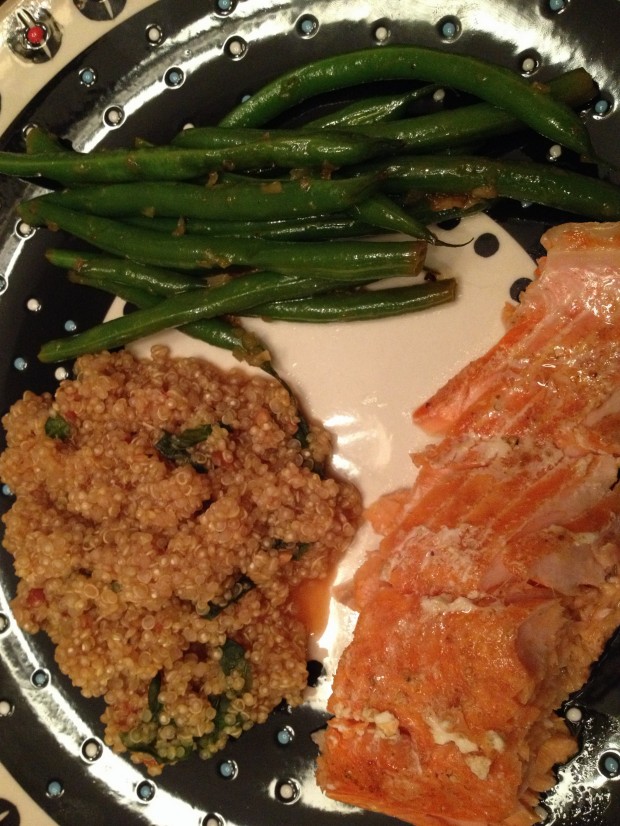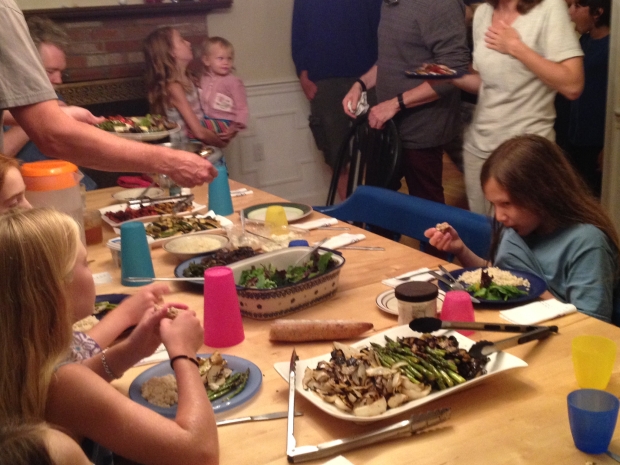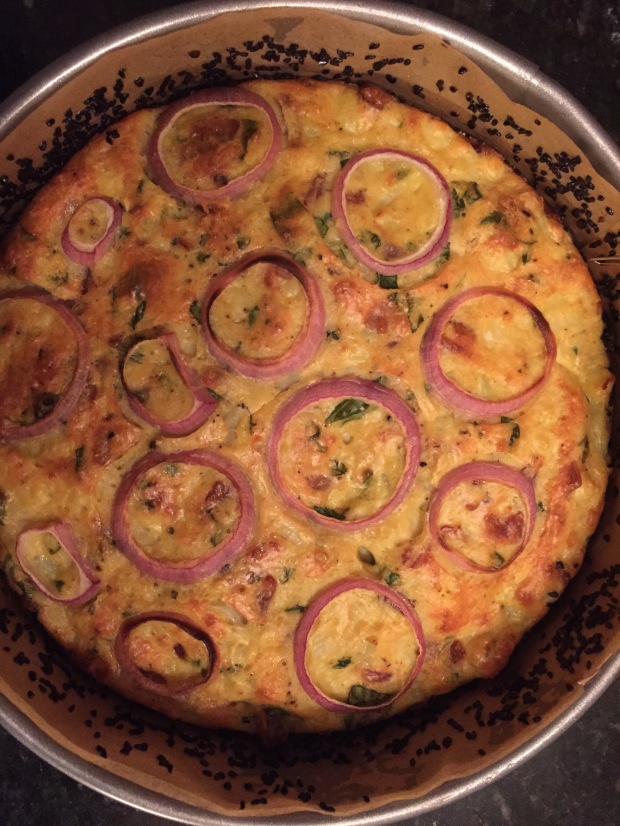 I bought the Plenty More cookbook, by genius chef Yotam Ottolenghi, on the basis of his recipe for cauliflower cake. One look at the photo that accompanied the recipe, and I knew I had to make that cake. It’s a bit weird, because not that long ago, I wouldn’t eat cauliflower in any form…something about it just, yuk. And then, overnight, when I was in my fifties, my fifties, I fell in love with it. I have no idea what happened. Maybe my taste buds finally grew up—my antipathy towards okra went away around then, too.
I bought the Plenty More cookbook, by genius chef Yotam Ottolenghi, on the basis of his recipe for cauliflower cake. One look at the photo that accompanied the recipe, and I knew I had to make that cake. It’s a bit weird, because not that long ago, I wouldn’t eat cauliflower in any form…something about it just, yuk. And then, overnight, when I was in my fifties, my fifties, I fell in love with it. I have no idea what happened. Maybe my taste buds finally grew up—my antipathy towards okra went away around then, too.
I’ve now made this cake several times, and while I like the original version, which is delicate and sublime, I need something a bit wilder, crunchier, more aggressive. This is what’s so much fun about cooking—playing around, making mistakes, making something your own, having the confidence to trust your own palate, sometimes failing, sometimes improving.
What follows is the original recipe, with my changes (so far) in italics. I’m not done with this recipe yet.
Ingredients
1 small cauliflower, outer leaves removed, broken into 1 1/4-inch/3-cm florets
1 medium red onion, peeled
5 tablespoons olive oil
1/2 teaspoon finely chopped rosemary
7 eggs
1/2 cup basic leaves chopped
1 cup all-purpose flour, sifted (or not–I don’t have a sifter)
1 1/2 teaspoons baking powder
1/3 teaspoon ground turmeric (or more, up to 1 tablespoon)
5 ounces coarsely grated Parmesan or another mature cheese
Salt and black pepper
Melted unsalted butter, for brushing
1 tablespoon white sesame seeds (make that 4 tablespoons, lightly toasted)
1 teaspoon nigella seeds (4 tablespoons, lightly toasted)
1 very generous pinch peperoncino
Preparation
Preheat the oven to 400°F
Place the cauliflower florets in a saucepan and add 1 teaspoon salt. Cover with water and simmer for 15 minutes, until the florets are quite soft. They should break when pressed with a spoon. Drain and set aside in a colander to dry. Or, roast the cauliflower florets at 350°F until they are beginning to brown around the edges. They will have softened somewhat but will still retain a bit of crunch.
Cut 4 round slices off one end of the onion (each 1/4 inch thick) and set aside. Coarsely chop the rest of the onion and place in a small pan with the oil and rosemary. Cook for 10 minutes over medium heat, stirring from time to time, until soft. (I like to reserve some of the onion and add them in at the last minute, so the onion mixture retains some texture.) Remove from the heat and set aside to cool.
Transfer the onion to a large bowl, add the eggs and basil, whisk well, and then add the flour, baking powder, turmeric, Parmesan, 1 teaspoon salt, and plenty of freshly ground black pepper. Add the peperoncino. Whisk until smooth before adding the cauliflower and stirring gently, trying not to break up the florets.
Line the base and sides of a 9 1/2-inch/24-cm spring-form cake pan with parchment paper. (I’m not very good at parchment paper, so I just line the bottom.) Brush the sides with melted butter, then mix together the sesame and nigella seeds and toss half of them around the inside of the pan so that they stick to the sides. Pour the cauliflower mixture into the pan, spreading it evenly, and arrange the reserved onion rings on top. Sprinkle the rest of the sesame and nigella seeds over everything.
Place in the center of the oven and bake for 45 minutes, until golden brown and set; a knife inserted into the center of the cake should come out clean. Remove from the oven and leave for at least 20 minutes before serving. It needs to be served just warm, rather than hot, or at room temperature. (Or cold from the fridge, for breakfast the next morning, held in your hand while you run out the door.)
Thoughts
This recipe seems infinitely adaptable. My next go at it will involve experimenting with egg whites instead of whole eggs, adding even more crunch and spice, and trying to take it out of the somewhat “brunchy” place it holds in my head to something substantial enough to serve for dinner–in other words, I guess, making it less “ladylike” and more edgy. Maybe a peppery red sauce? Maybe some leeks along with those onions? No matter what, though, it will always be beautiful to look at, just like the photo that grabbed me in the first place.
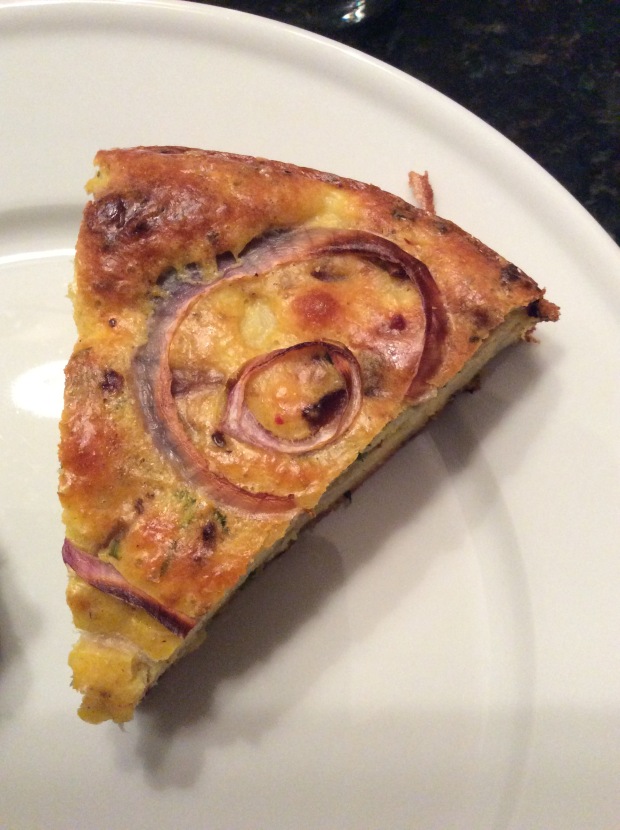

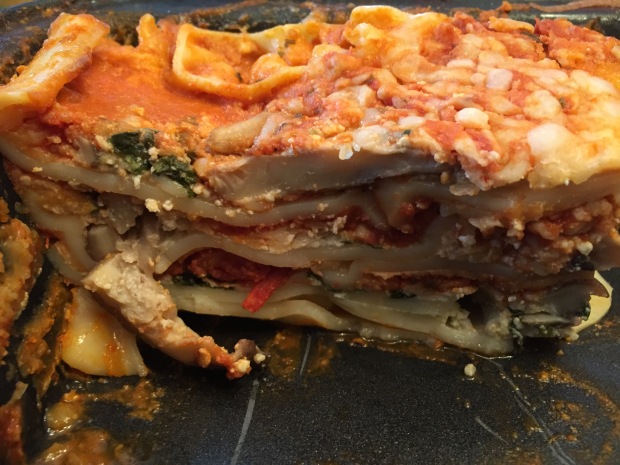 Someone in this house had some dental surgery and was limited to soft foods for a week or so. This is a great go-to comfort meal for when you want taste but can’t really chew. Or anytime, really. It’s good for dinner, good cold for breakfast, good heated up in a bowl for lunch. And it gets better every day.
Someone in this house had some dental surgery and was limited to soft foods for a week or so. This is a great go-to comfort meal for when you want taste but can’t really chew. Or anytime, really. It’s good for dinner, good cold for breakfast, good heated up in a bowl for lunch. And it gets better every day.

